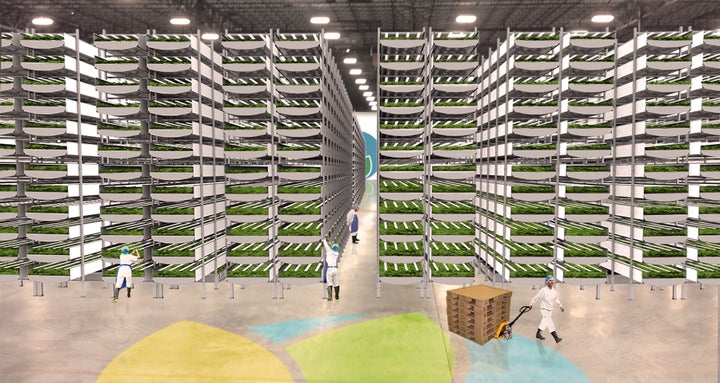 For this blog post, I interviewed Alex Highstein: a friend who serves as the Corporate Development Manager at Aerofarms. Aerofarms is building the world’s largest indoor vertical farm based in Newark, NJ. They aim to address the global food crisis by leveraging technology to “grow flavorful, healthy leafy greens in a sustainable and socially responsible way” without sunlight or soil.
For this blog post, I interviewed Alex Highstein: a friend who serves as the Corporate Development Manager at Aerofarms. Aerofarms is building the world’s largest indoor vertical farm based in Newark, NJ. They aim to address the global food crisis by leveraging technology to “grow flavorful, healthy leafy greens in a sustainable and socially responsible way” without sunlight or soil. My goal in this interview was to share information about Aerofarms’ work to our class, as well as link their strategic goals to some of the concepts we have already discussed.
Hi Alex, thank you for taking the time to join us today. Some of us in 'Business & Environment' are unfamiliar with indoor vertical farming and would love to learn more about what Aerofarms does. In what ways is vertical farming superior to how we traditionally think of farming, and what problems does it aim to solve?
Vertical farming delivers a product that has been given the white-glove treatment in every sense: inputs such as nutrients, water, and light are delivered in qualities, quantities and intervals ideal for the specific plant. This results in a product with optimal taste, texture, appearance, and nutritional content. Vertical farming can significantly reduce the carbon footprint of our food: AeroFarms uses 50% of the fertilizer, zero herbicide and pesticide, and 90% to 95% less water than traditional field farming. We also locate our farms close to cities, eliminating the emissions from refrigerated trucks. These trucks often drive across the country, resulting in serious carbon monoxide emissions, and poorer product quality. Indoor farming is a natural barrier to pests, but the controlled process also de-risks contamination from deadly pathogens as well; you don't have to look far to find examples of dangerous listeria or E. Coli outbreaks, which seem to be more and more common. One significant challenge that vertical farming aims to tackle is population growth. Coupled with the loss of arable land, by 2050 we will have twice as many mouths to feed with significantly less land to do so. Vertical farming is much more efficient: AeroFarms is 130 times as efficient as a field farm. Finally, we want to connect people with their food: by locating close to or within cities, we have a unique opportunity to engage with our customers and help promote understanding of what people are eating, and where it comes from.

Aerofarms is currently building the world's largest indoor vertical farm, and is known for a patented aeroponic growing system. What are the most challenging aspects of delivering sustainably-farmed produce on such a large scale?
Technology is rapidly evolving, which presents both challenges and opportunities for vertical farming. Adapting to new, efficient, techniques takes time and there is often a learning curve. Although consumer acceptance and understanding also takes time, we have found that people respond very positively to our product: its environmental benefits are outstanding, and the taste speaks for itself. Financing can be a challenge as well: we are a relatively nascent company in a very young industry, and access to traditional capital is often difficult. Fortunately there is a lot of interest in the space, and global recognition that we need to figure out new ways of producing healthy food.
In class recently, we discussed whether a firm's level social responsibility can be positively correlated with profitability. Do you think it pays to be green?
I believe it does. In the short term, being green allows us to position our product as a premium alternative to traditional field farmed salads. People care about what they're putting in their bodies, and want a product that is grown without herbicides or pesticides, and with more nutrients and a better taste. In the long term it almost certainly will: we need to take better care of our environment; the degradation of our land and water will almost certainly catch up to us, and when stricter regulations are put on farmers so that they pollute less (70% of fresh water goes to agriculture, and 70% of water pollution comes from agriculture), we will be well ahead of the competition.
Posted by Shahed Serajuddin




